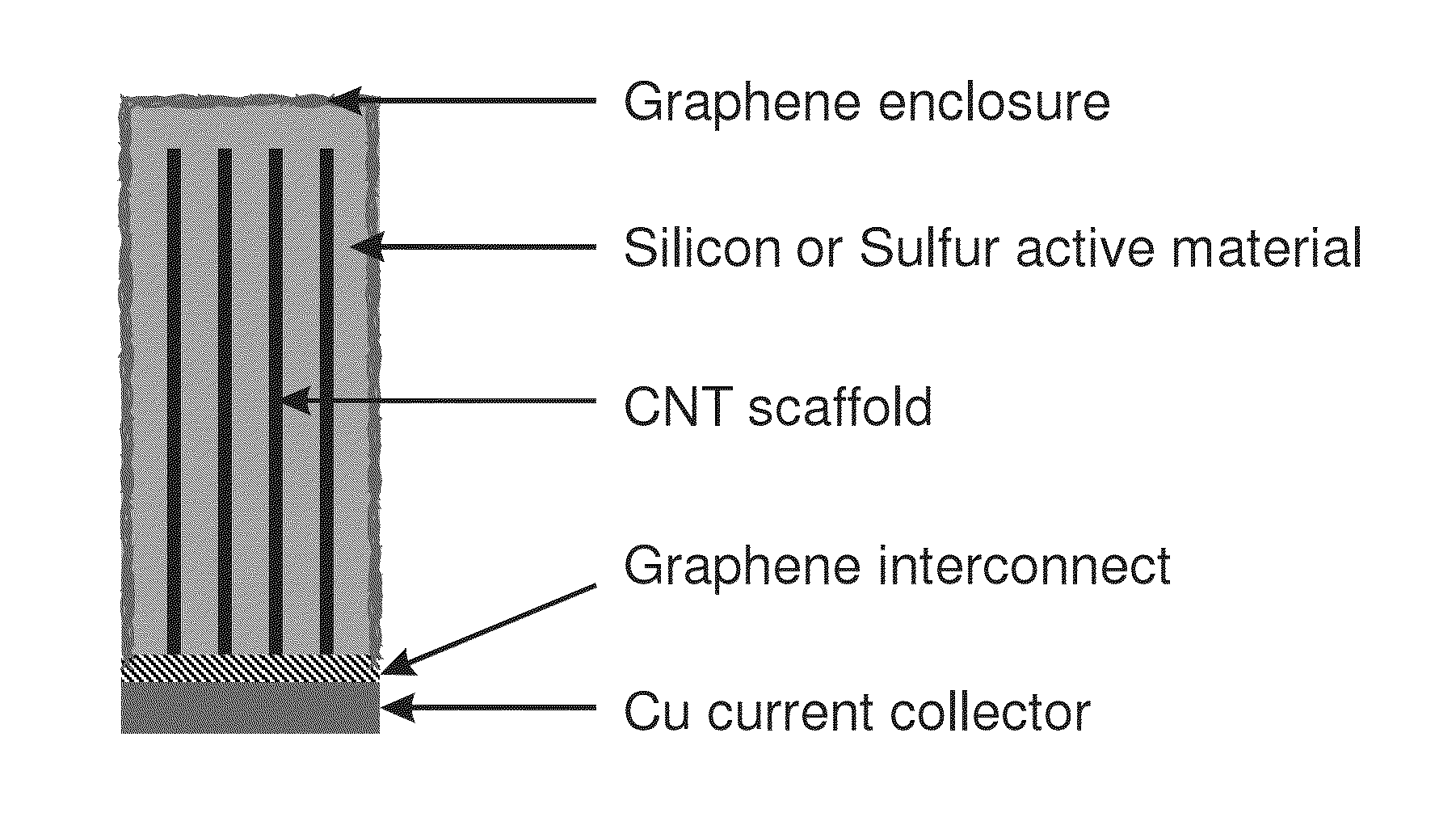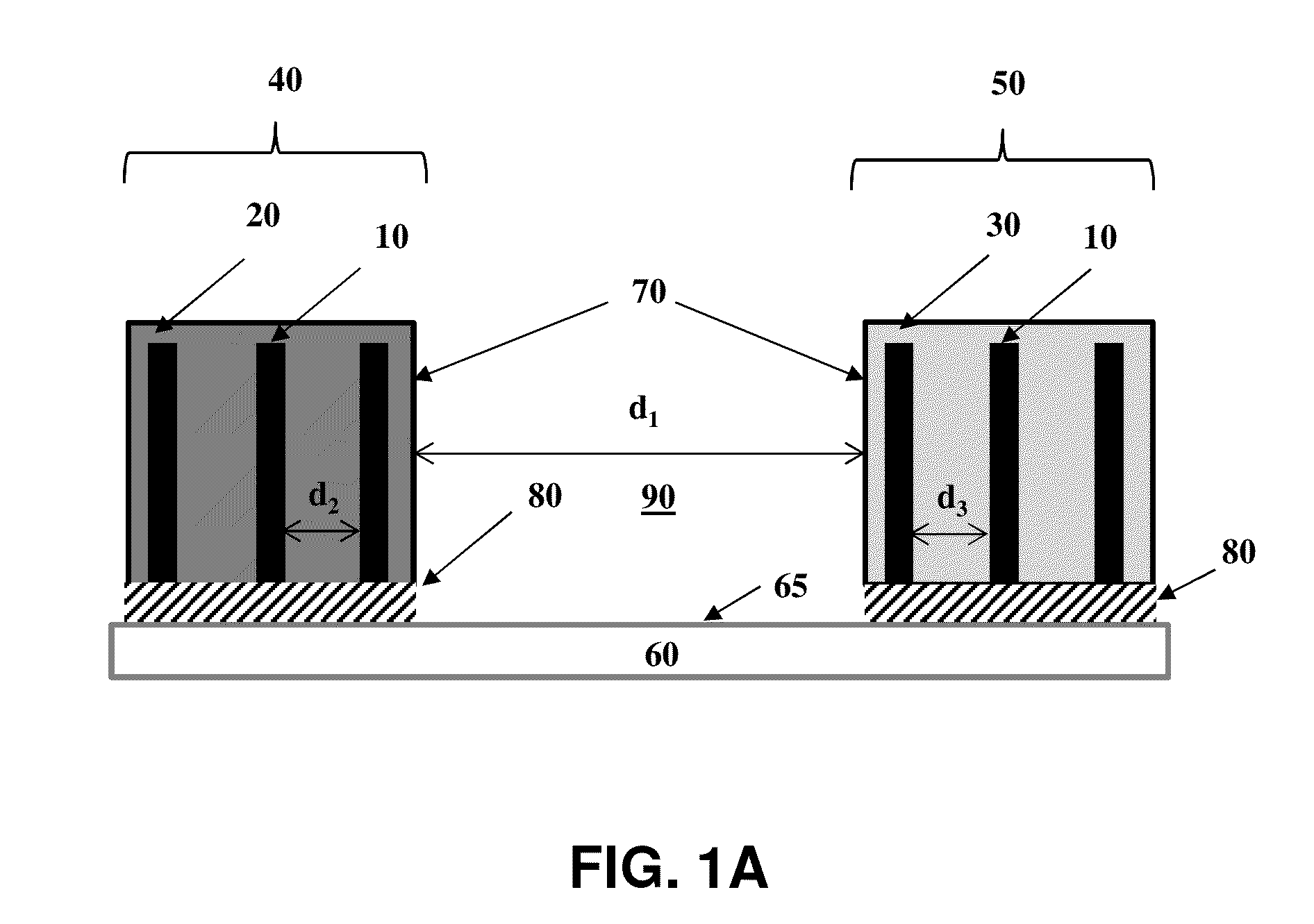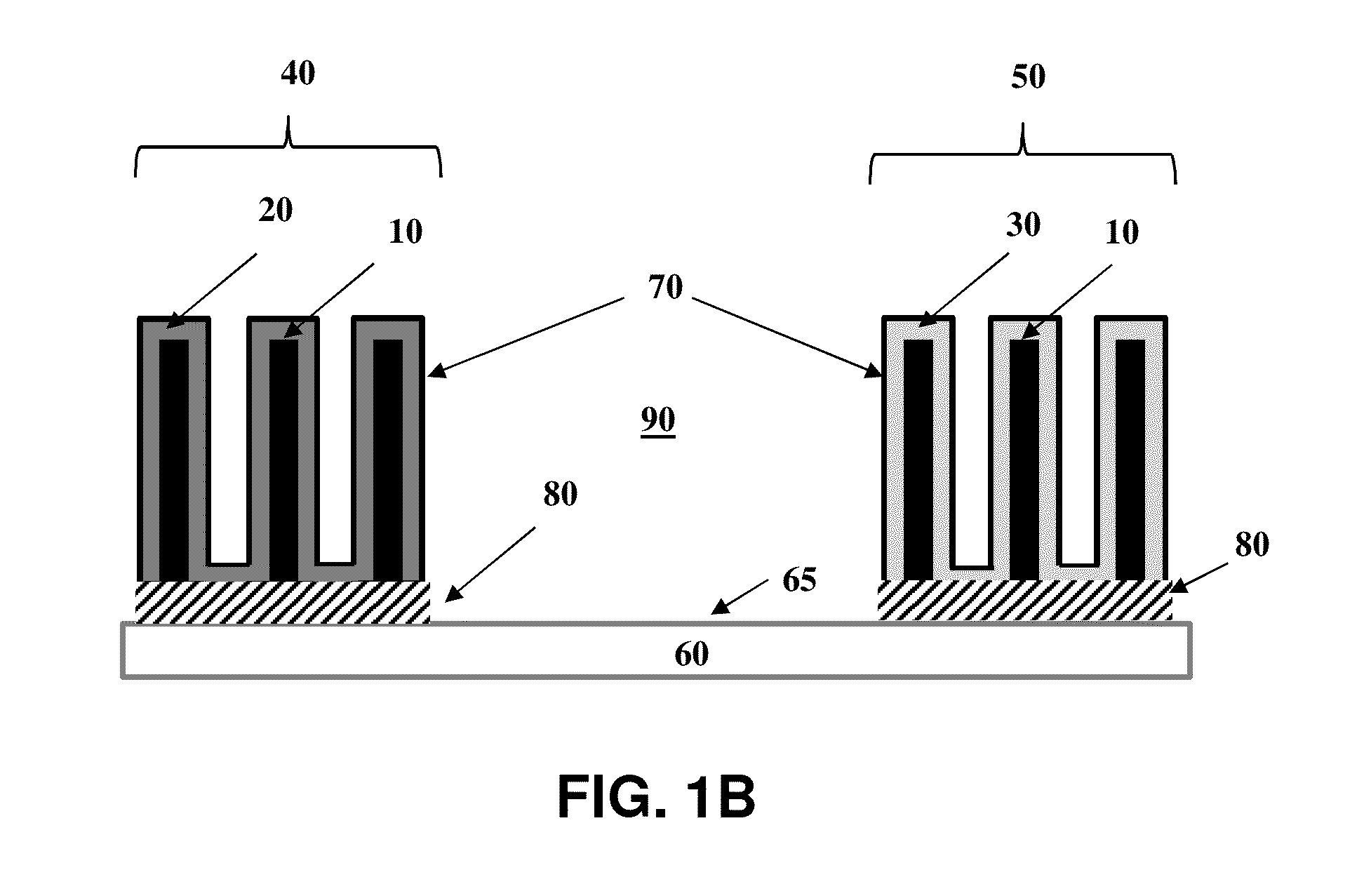Carbon Nanotubes - Graphene Hybrid Structures for Separator Free Silicon - Sulfur Batteries
a technology of graphene and separator free silicon, applied in the direction of cell components, final product manufacturing, sustainable manufacturing/processing, etc., can solve the problems of limited overall energy densities, significant challenges to be addressed, cathode active materials, etc., to improve electrical power source performance, useful discharge rate capability, high specific energy
- Summary
- Abstract
- Description
- Claims
- Application Information
AI Technical Summary
Benefits of technology
Problems solved by technology
Method used
Image
Examples
example 1
Carbon Nanotubes—Graphene Hybrid Structures for Separator Free Silicon-Sulfur Batteries
[0075]For decades, lithium ion batteries have been known as the most prominent means of storing electrical energy. However, a large-scale adoption of these batteries has been largely hindered by safety concerns, high production and maintenance cost, and mediocre performance. Such issues are mostly originated from the limited energy density and poor charge-discharge cycles associated with the currently available positive and negative electrodes (cathodes and anodes respectively). For example, the commonly used LiMn2O4 cathodes have a very low energy density and limited charge-discharge cycles. While LiCoO2 and LiFePO4 cathodes have a reasonably high energy density, the former are extremely toxic and the later have a very poor electrical conductivity. Similarly, the use of lithium metal anodes often leads to fire and explosion hazards. Dendrites grown on lithium metal during the charge-discharge cyc...
PUM
| Property | Measurement | Unit |
|---|---|---|
| Length | aaaaa | aaaaa |
| Fraction | aaaaa | aaaaa |
| Thickness | aaaaa | aaaaa |
Abstract
Description
Claims
Application Information
 Login to View More
Login to View More - R&D
- Intellectual Property
- Life Sciences
- Materials
- Tech Scout
- Unparalleled Data Quality
- Higher Quality Content
- 60% Fewer Hallucinations
Browse by: Latest US Patents, China's latest patents, Technical Efficacy Thesaurus, Application Domain, Technology Topic, Popular Technical Reports.
© 2025 PatSnap. All rights reserved.Legal|Privacy policy|Modern Slavery Act Transparency Statement|Sitemap|About US| Contact US: help@patsnap.com



